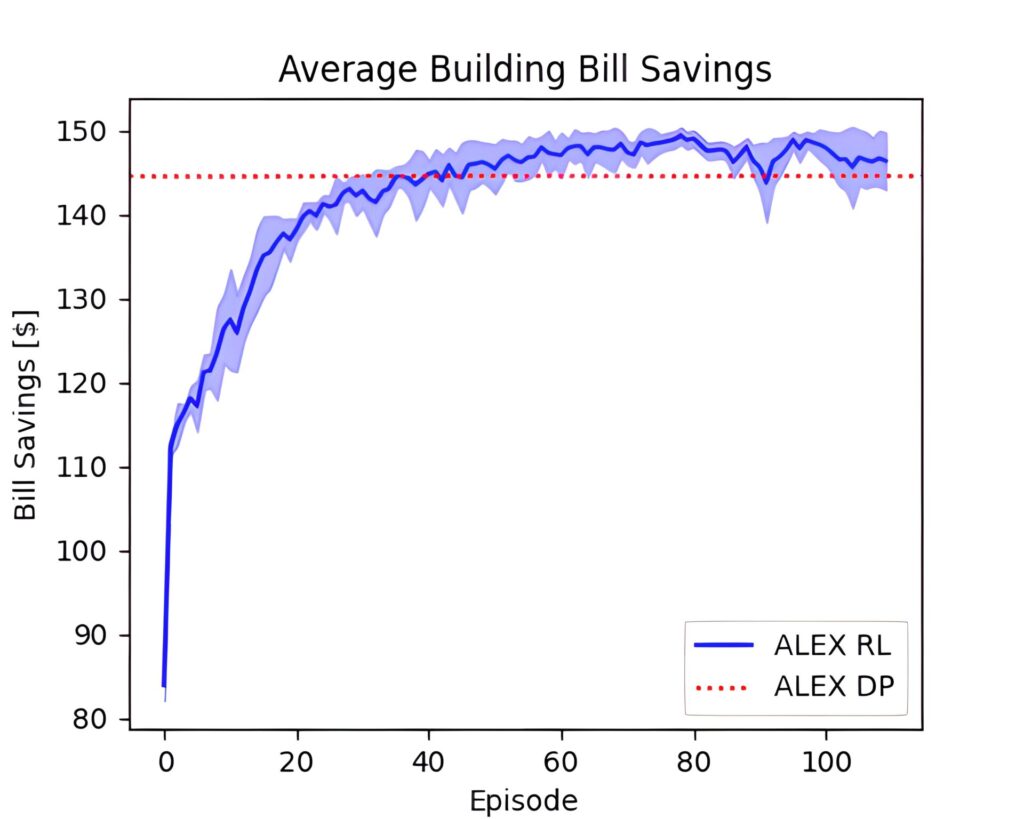As Distributed Energy Resources (DERs) like rooftop solar and electric vehicles become more common at the grid’s edge, utilities increasingly encounter increasing operational costs and reliability concerns. The unpredictability of energy usage and generation at the community level compounds the grid’s volatilities, driving up costs and straining existing infrastructure. Local energy markets (LEMs), an emerging solution in transactive energy, allow communities to trade locally produced electricity and can reduce overall grid impact. In earlier research, we designed an LEM mechanism that aligns end-user and grid stakeholder interests (see here). In subsequent research, we demonstrated how automated, optimal participation in this LEM reduces grid impact (see here).
This peer-reviewed research journal takes the next step and automates end-user participation in our LEM via deep reinforcement learning (DRL), a cutting-edge AI technique.
While our DRL agents are tasked with selfishly maximizing the value they gain from the LEM, the emergent behavior born from the necessary competition and collaboration reduces grid volatilities on a level that implies emergent community-level optimization, but in a fully decentralized system without direct communication!
We call this system ALEX, the automated local energy exchange.
Core Research Findings and Key Takeaways
Compared to no DERMS present in the community, ALEX reduced
- Energy imports by 21.9% and energy exports 84.4%, meaning that the community utilizes significantly more locally generated energy.
- Ramping Rate by 26% and average daily peaks by 27%, meaning the community significantly reduced its grid impact.
ALEX strictly outperformed a benchmark decentralized DERMS.
These results show that DRL not only optimizes costs but also enhances grid stability, making it a strong candidate for utility-scale applications.
Some broader takeaways include:
- ALEX aligns participant and grid stakeholder interests, leading to community-wide benefits and reduced grid impact.
- Our DRL agents act independently and selfishly, but due to ALEX’s design, the end result is emergent community-level coordination of assets.
- The resulting system is scalable across different grid configurations and community setups, as it does not rely on centralized decision-making and can be gradually expanded.
Implications for Utilities
For utilities looking to modernize their grids or integrate DERs, this research highlights how combining LEMs and DRL can reduce operational complexity and improve resilience. Unlike traditional methods, DRL is fully data-driven, allowing utilities to implement the system without needing custom models or assumptions about user patterns.
Moreover, due to the scalability of such systems, utilities can gradually roll out these solutions across communities, starting small and expanding over time. This flexibility minimizes risk and allows utilities to scale at their own pace while still achieving grid stability and cost reductions.
If you’re interested in exploring how ALEX could benefit your grid operations, we invite you to reach out to T.rex AI. We can work together to explore pilot projects, such as digital twin studies, and gather the data you need to assess scalability, cost optimization, and real-world impact.
